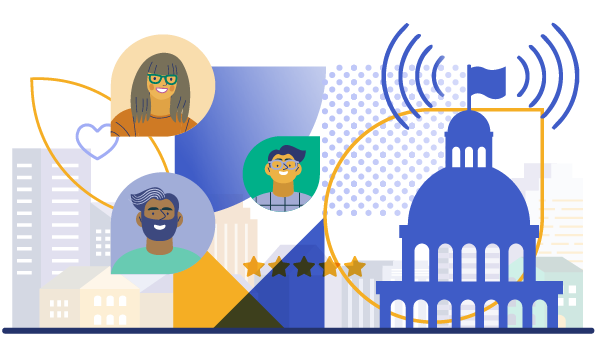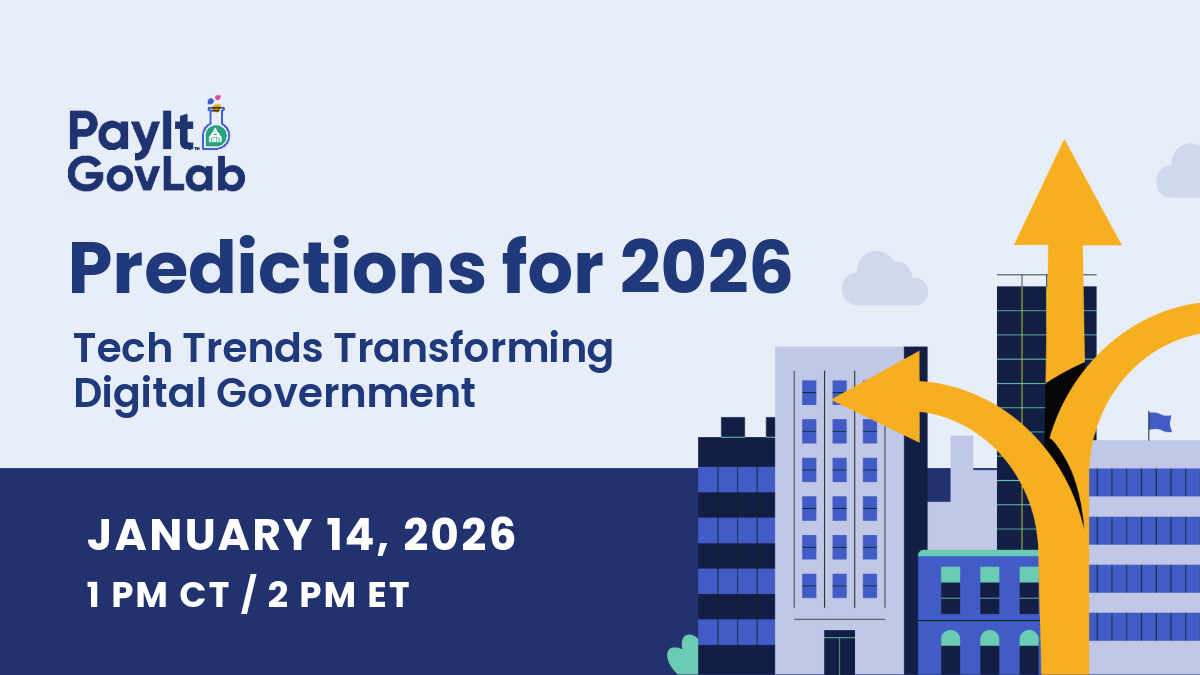High-Impact Resident Communication: The Definitive Guide
Breaking through noise in the attention economy

Great communication is essential for resident engagement
Communicating with the public is vital work for government agencies and elected officials. Proactive engagement with residents opens lines of communication for feedback and gives officials opportunities to foster trust by sharing important information about available services, emergency information, how to pay a bill, or other helpful tools and resources.
This guide will walk you through the fundamentals of effective public sector communication, addressing channels, language, how technology can help, and real-world examples you can apply to your own messaging.
People are dealing with a constant stream of information
Making sure that communication is effective is more important than ever. We are all inundated with more information now than any time in history, and channels of communication continue to evolve.
Residents expect government information and services to be easy to access
Government service delivery doesn’t happen in a vacuum; residents expect the same digital experiences and savvy that they encounter elsewhere. And government communications target a wide audience that needs to understand the message. Yet, aside from a few outliers, many government websites, social channels, and yes, even print materials, don’t always hit the mark.
Digital tools have changed the way people communicate
Technical advances have provided new opportunities and new challenges for government. Information now moves faster than ever before, and government agencies need to rethink how they create and share information. While government agencies may continue to use traditional channels to reach some users, they should be thought of as a complement to digital tools — never a sufficient replacement.
Get your resident communications dialed in
People turn to several sources for government information: social media, the agency’s website, local news outlets, printed materials, and word of mouth. But knowing when and how to use each channel can be a challenge for agencies — and that’s putting resident trust at risk. In fact, most young adults find it a struggle to engage with the government, and only 28% of people ages 18–34 believe the government communicates effectively with them.
Although some government agencies and elected officials are using digital communication effectively, many are lagging behind — lacking (for starters) a user-friendly website and active, engaging social media channels. Traditional channels like broadcast television, radio, newspapers, and mail have largely given way to digital platforms. Complicating the matter: popular digital channels of communication continue to proliferate, with new platforms such as TikTok commanding a lot of people’s attention as others recede.

With so many options, it’s no wonder that effective communication is hard to achieve for government agencies. In smaller agencies, there likely isn’t anyone on staff who specializes in marketing or government-to-consumer communications. And in bigger agencies, communications staff have their hands full and can’t always contribute to every message that needs to be sent.
Better communication leads to better outcomes
Government communication matters. Whether it’s safety updates, service changes, or program information, people need to hear from their government and believe what they hear. Different messages serve different purposes, but getting communications right has numerous benefits:
Raise awareness
Many people don’t know about all the services, programs, or events their local government offers. Good communication helps fix that. When people understand what’s available and when it matters, they’re more likely to take part and get the help they need.
Build trust
Only around 15% of Americans believe the government is transparent, and less than half believe it is accountable to the public. People’s trust in government often depends on what they hear and how they hear it. When information is clear, honest, and on time, it shows that the government is working for the people. When trust is low, simple and open communication makes a real difference.
Encourage participation
Informed people are more involved. Whether it’s giving feedback, answering a survey, or showing up to a meeting, it starts with knowing what’s going on. Keeping residents in the loop helps build a stronger connection between people and their government.
To keep reading, download the full guide
You’ll learn:
- Principles for effective public messaging
- Choosing the right voice and tone
- Tips to improve your resident messaging — with edited real-world examples
- Picking the best communication channel
- How technology can help — includes ready-to-use AI prompts



